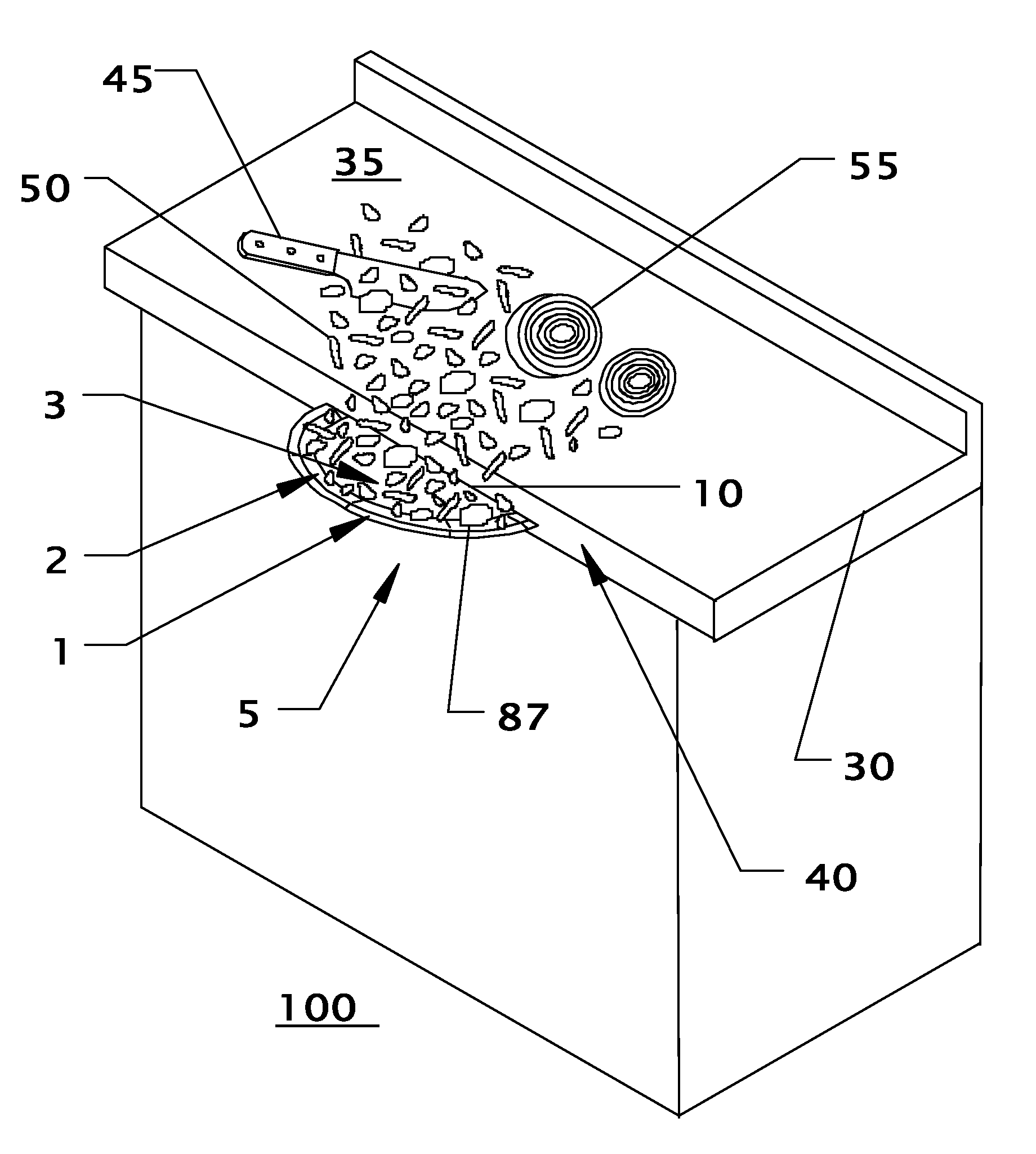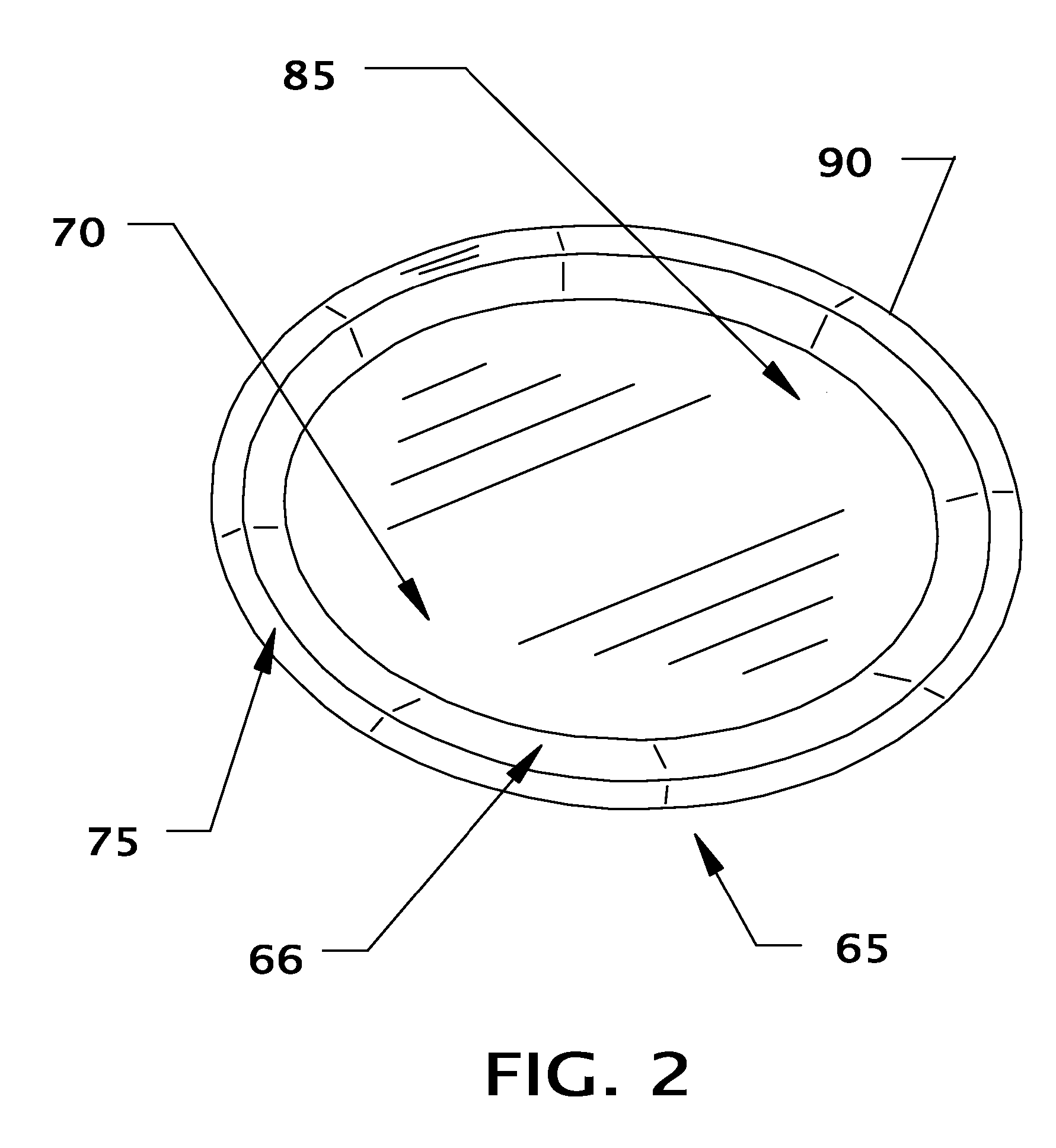Method of making and using a kitchen receptacle for the collection and transfer of food material
a technology for transferring food and food items, which is applied in the field of making and using a kitchen receptacle for transferring food materials, can solve the problems of unsanitary and wasteful methods, uneconomical, inefficient, wasteful and wasteful methods, and wasteful and wasteful transfer of food items, so as to achieve economic formation or manufacture, the effect of safe and convenient us
- Summary
- Abstract
- Description
- Claims
- Application Information
AI Technical Summary
Benefits of technology
Problems solved by technology
Method used
Image
Examples
Embodiment Construction
[0036]FIG. 1 shows a food item 55 that has been cut and chopped into a plurality of prepared food items 50 and collected atop a chop board top surface 20 of a typical kitchen chop board 15. FIG. 1 depicts prior art chop board 15, after being manually lifted, balanced and carried, and then awkwardly tilted toward and held above a receptacle 110. Said prepared food items are then transferred to said receptacle by awkwardly raking, using a raking means such as a typical kitchen knife 45, toward and over a chop board raking edge end portion 25 allowing a first random plurality 86 of said prepared food items to enter said receptacle by gravity. Said awkward tilting and raking also causes a second random plurality 51 of said prepared food items to unsuccessfully enter said receptacle but rather undesirably onto an adjacent surrounding surface 105. In addition said awkward tilting and raking also causes food item 55 to undesirably roll off said chop board surface. This inefficient prior ar...
PUM
 Login to View More
Login to View More Abstract
Description
Claims
Application Information
 Login to View More
Login to View More - R&D
- Intellectual Property
- Life Sciences
- Materials
- Tech Scout
- Unparalleled Data Quality
- Higher Quality Content
- 60% Fewer Hallucinations
Browse by: Latest US Patents, China's latest patents, Technical Efficacy Thesaurus, Application Domain, Technology Topic, Popular Technical Reports.
© 2025 PatSnap. All rights reserved.Legal|Privacy policy|Modern Slavery Act Transparency Statement|Sitemap|About US| Contact US: help@patsnap.com



